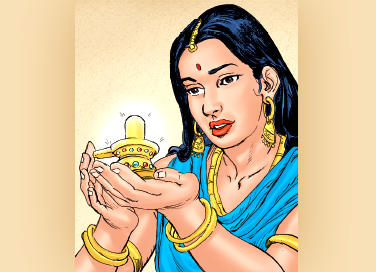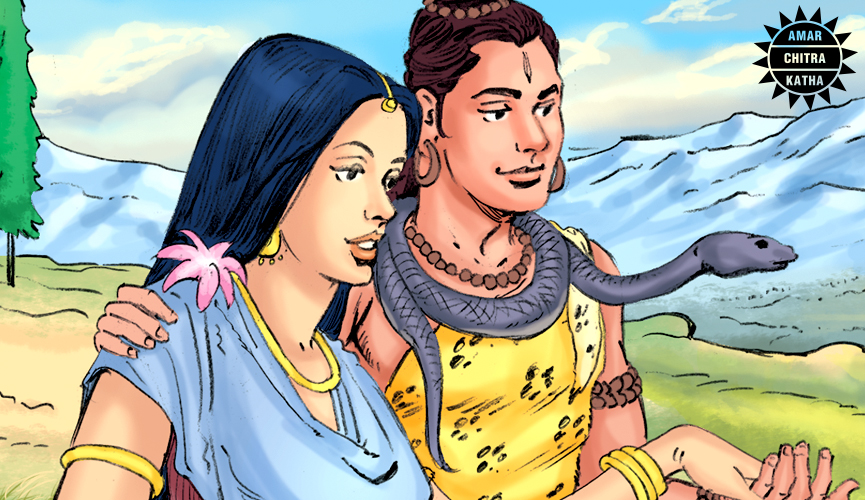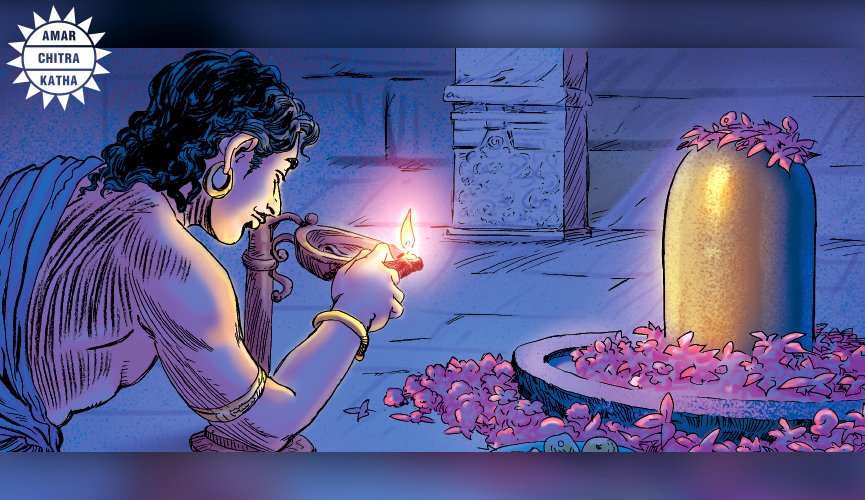The Lingam and The Yoni
- April 21, 2021


The Lingam and The Yoni
- April 21, 2021
Premium
By Malini Saigal
Many gods are worshipped through their symbols as well as through their image or murtis. Symbols are always connected to a particular idea about the god. A shalagram (fossilized shell) is a symbol of Vishnu, as he is supposed to restart the universe from the cosmic ocean. Krishna is often worshipped as a kadamba tree, as in the story of Krishna’s boyhood, he would always play his flute under the kadamba tree. Similarly, the Bodhi tree is also a sign of the Buddha, as that is where he gained enlightenment.
Read more such exciting stories on the ACK Comics App today :- Click now
To receive more such stories in your Inbox & WhatsApp, Please share your Email and Mobile number.

The symbol of Shiva and Parvati are the lingam and the yoni, which are the male and female regenerative organs. They symbolise the life force of the universe. When they are together, there is cosmic balance and harmony in nature.
The idea that the universe, or rather existence itself, is a result of the union of male and female energies is as much a scientific fad as it is a philosophical truth. It has found expression in many religions across the world, like the Chinese and the Egyptian civilizations.

It is interesting to decode mythology. Shiva by himself is seen as pure consciousness or mental energy. He is the dormant, detached male power. He cannot sustain life and creation on his own and needs the dynamism of the Goddess to create life. In a very simple sense, it is the meeting of the fertile earth and its waters, with the light and energy of the sky. The core of the Shiva Purana is the marriage of Shiva and Parvati, which is essential to save the world from turning into a wasteland, or from being destroyed by demons.
Read more stories of Shiva in our Mahadeva series. Now available on the ACK Comics App and Kindle.
To receive more such stories in your Inbox & WhatsApp, Please share your Email and Mobile number.

Comic of The Month
The Naval Journey of India Book I
This book is the first of a three-book series that takes a deep and detailed look at India's Naval History and a deep insight into the lives of our men and women in white. But any series on the Indian Navy has to start at the very beginning - exploring India's celebrated maritime history. Join our little hero, Bharat, and his grandfather, Commodore Sagar, as they sail into the deep blue waters of time. Book I of The Naval Journey of India takes a sweeping look at India's maritime endeavours, how the seas impacted us over millennia and how the oceans made us who we are.